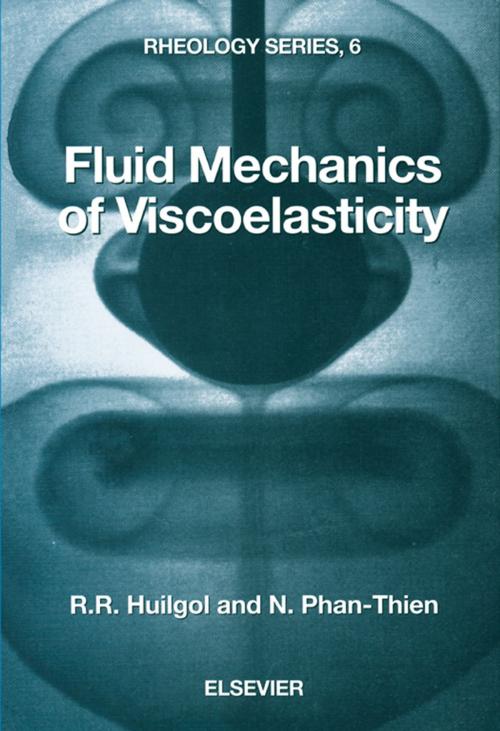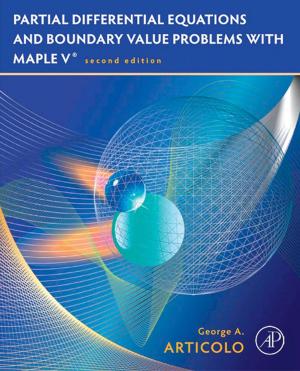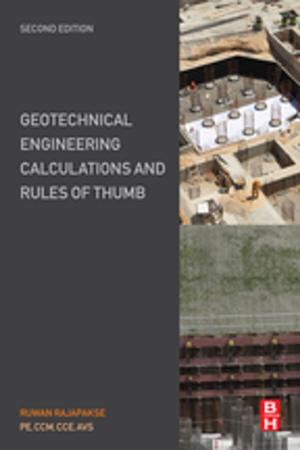Fluid Mechanics of Viscoelasticity
General Principles, Constitutive Modelling, Analytical and Numerical Techniques
Nonfiction, Science & Nature, Technology, Engineering, Chemical & Biochemical, Mechanical| Author: | R.R. Huilgol, N. Phan-Thien | ISBN: | 9780080531748 |
| Publisher: | Elsevier Science | Publication: | June 2, 1997 |
| Imprint: | Elsevier Science | Language: | English |
| Author: | R.R. Huilgol, N. Phan-Thien |
| ISBN: | 9780080531748 |
| Publisher: | Elsevier Science |
| Publication: | June 2, 1997 |
| Imprint: | Elsevier Science |
| Language: | English |
The areas of suspension mechanics, stability and computational rheology have exploded in scope and substance in the last decade. The present book is one of the first of a comprehensive nature to treat these topics in detail. The aim of the authors has been to highlight the major discoveries and to present a number of them in sufficient breadth and depth so that the novice can learn from the examples chosen, and the expert can use them as a reference when necessary.
The first two chapters, grouped under the category General Principles, deal with the kinematics of continuous media and the balance laws of mechanics, including the existence of the stress tensor and extensions of the laws of vector analysis to domains bounded by fractal curves or surfaces. The third and fourth chapters, under the heading Constitutive Modelling, present the tools necessary to formulate constitutive equations from the continuum or the microstructural approach. The last three chapters, under the caption Analytical and Numerical Techniques, contain most of the important results in the domain of the fluid mechanics of viscoelasticity, and form the core of the book.
A number of topics of interest have not yet been developed to a theoretical level from which applications can be made in a routine manner. However, the authors have included these topics to make the reader aware of the state of affairs so that research into these matters can be carried out. For example, the sections which deal with domains bounded by fractal curves or surfaces show that the existence of a stress tensor in such regions is still open to question. Similarly, the constitutive modelling of suspensions, especially at high volume concentrations, with the corresponding particle migration from high to low shear regions is still very sketchy.
The areas of suspension mechanics, stability and computational rheology have exploded in scope and substance in the last decade. The present book is one of the first of a comprehensive nature to treat these topics in detail. The aim of the authors has been to highlight the major discoveries and to present a number of them in sufficient breadth and depth so that the novice can learn from the examples chosen, and the expert can use them as a reference when necessary.
The first two chapters, grouped under the category General Principles, deal with the kinematics of continuous media and the balance laws of mechanics, including the existence of the stress tensor and extensions of the laws of vector analysis to domains bounded by fractal curves or surfaces. The third and fourth chapters, under the heading Constitutive Modelling, present the tools necessary to formulate constitutive equations from the continuum or the microstructural approach. The last three chapters, under the caption Analytical and Numerical Techniques, contain most of the important results in the domain of the fluid mechanics of viscoelasticity, and form the core of the book.
A number of topics of interest have not yet been developed to a theoretical level from which applications can be made in a routine manner. However, the authors have included these topics to make the reader aware of the state of affairs so that research into these matters can be carried out. For example, the sections which deal with domains bounded by fractal curves or surfaces show that the existence of a stress tensor in such regions is still open to question. Similarly, the constitutive modelling of suspensions, especially at high volume concentrations, with the corresponding particle migration from high to low shear regions is still very sketchy.















